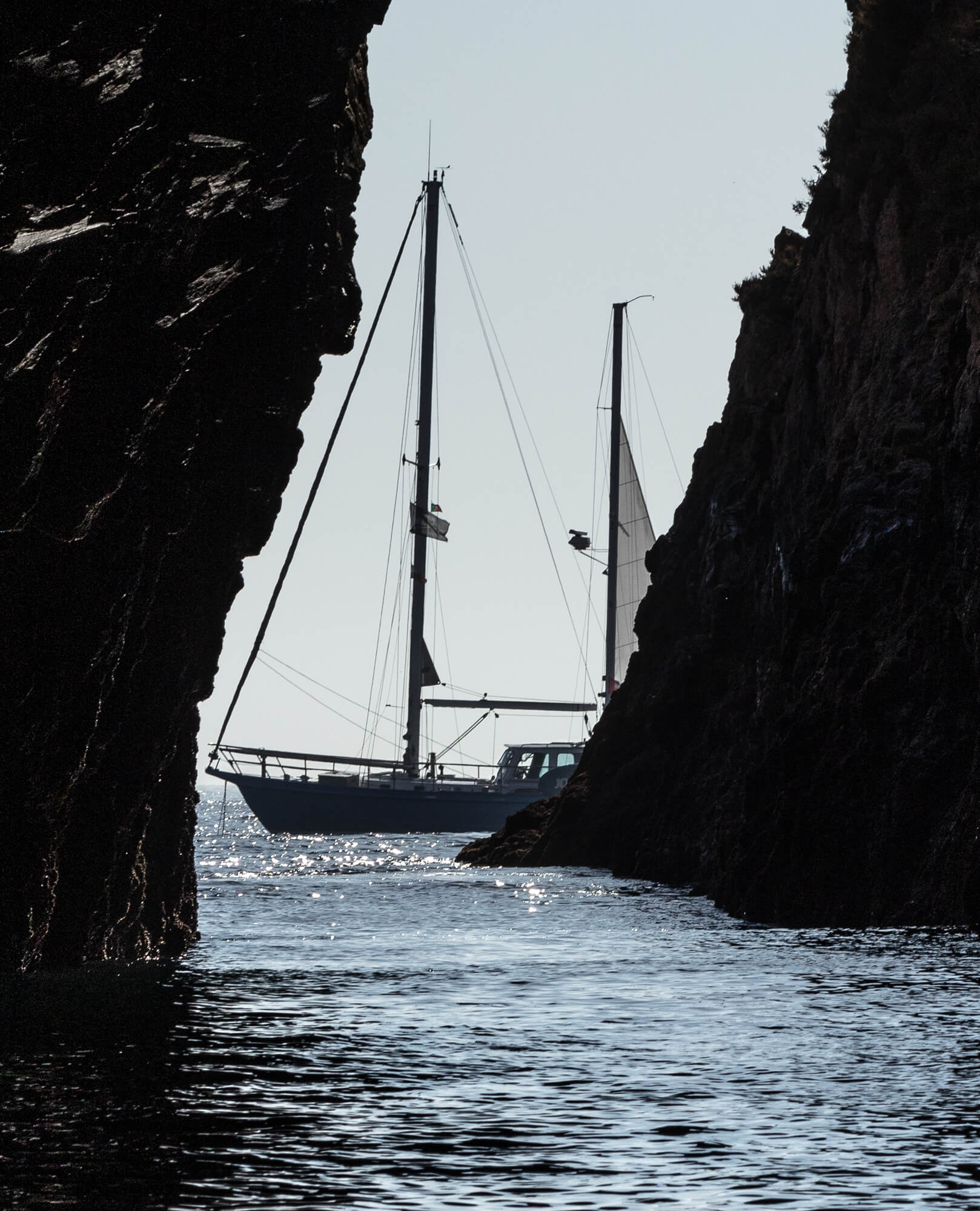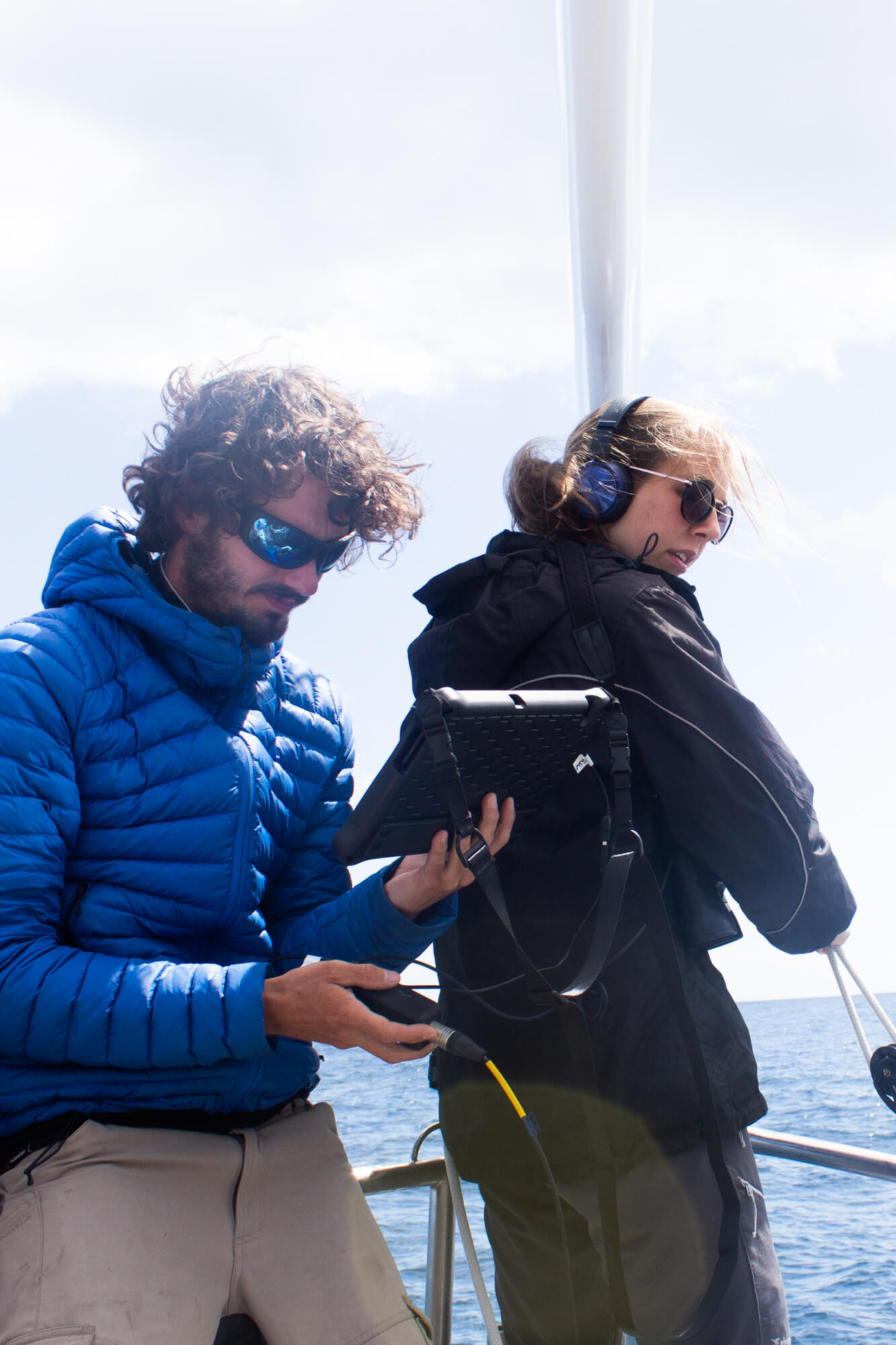By Mathieu Marzelière with the collaboration of Laurence Tremblay
[Continuation of article “Destination Azores with Expedition Glacialis (Part 1 of 2: Marine Fauna)”]
During our stay in the Azores in the spring of 2021, we took part in preparations and testing in anticipation of the inaugural departure of a scientific mission to the Arctic: Expedition Glacialis.
Expedition Glacialis is a genuine collaborative effort between multiple researchers and organizations that study the marine universe. The project aims to reconcile several different protocols for collecting data while plying the frigid waters of the Arctic. The idea is to optimize the journey and share costs by recovering as much quality information as possible in a single trip. Expedition Glacialis also seeks to foster collaboration between scientific partners and promote open research in order to improve the general knowledge of maritime ecosystems.
At the dawn of a great adventure!
The adventure takes place aboard a ketch, a two-masted sailboat whose mainmast is set forward. Atlas, our 12 m long boat, features a steel hull, a lead keel, and an enclosed pilothouse; in short, it is well thought out and designed to be seaworthy in polar environments and in harsh weather conditions.
For 6 weeks, we cruised around the islands of the Azores, setting up and testing our various scientific protocols in preparation of our upcoming venture into the Arctic. Here is an overview of the data that we collected:
Visual monitoring and photo-identification
In the course of our travels, all encounters were documented using the data compilation software Mysticetus. This program can notably be used to map out one’s observations and to link different types of data (acoustic, photos, etc.) to each other. We also made use of photo-identification. This method is a non-invasive technique to identify a given individual through photos. Each photo is carefully examined to pick out the individual’s most noteworthy physical characteristics (dorsal fin, colour pattern of the caudal fin or body, scars, etc.) in an effort to identify it. It can then be matched with an already known individual and/or recognized in a future encounter. These data can later be used to better understand the distribution, migratory movements or social structure of populations. The images collected in the Azores were therefore shared with research organizations studying cetaceans in the archipelago and beyond.
Microplastics
One of the Expedition Glacialis partners is the non-profit organization Oceaneye, which studies the surface microplastics that various boats gather around the globe while following a well-established data collection protocol. (https://www.oceaneye.ch/cartographie/) In this context, we procured a Manta net, which, like the manta ray, skims the water surface and picks up any small particles in suspension. The collected samples are then sent for analysis to the organization’s laboratory in Switzerland. The data and the ensuing results are extremely important in order to better understand the impact of this practically invisible pollution on bird and marine mammal populations.
Listening to the ocean
Another one of our partners is researcher Michel André of the Laboratory of Applied Bioacoustics (LAB). For years, André has been studying the acoustic data of various populations of marine mammals around the globe. His laboratory is currently developing an application that would allow everyday citizens to collect acoustic data. Dubbed ‘EARtotheWild,’ this software will eventually use artificial intelligence to analyze in real time the marine sounds recorded with a hydrophone connected to a mobile phone or tablet. The goal is to identify the species present in proximity. Our task was to test, train and enhance the system by using it in real-world conditions.
The secrets of environmental DNA
What is environmental DNA? This is the DNA left behind by animals in their habitat. A water sample taken from a lake, for example, contains tiny bits of DNA from its inhabitants. By analyzing such a water sample, it is therefore theoretically possible to determine the species present and thereby assess the biodiversity of the environment. Expedition Glacialis partnered with the organization NatureMetrics to test this method. Our partner provided us with around ten sampling kits and will analyze our samples.
Cephalopod scraps
Expedition Glacialis also teamed up with the Azorean research organization Moniceph, which studies deep-sea cephalopods. Indeed, the waters of the Azores archipelago contain deep ocean trenches that are home to difficult-to study organisms. In order to identify the species inhabiting the abyss, researchers at Moniceph analyze bits of octopus brought to the surface by their predators such as sperm whales, Risso’s dolphins, pilot whales or even beaked whales. During our transects, we also kept our eyes peeled for any trace of the remains of the Kraken! The collected samples were then immersed in ethanol before being sent to Moniceph for analysis.
Research and sailing: reconciling two different challenges
It goes without saying that we had to overcome many challenges during our time in the Azores. When one considers that Atlas is generally limited to 4 or 5 crew members, and that in addition to collecting data, we have to operate the craft, not to mention eat and sleep, it quickly becomes apparent that without adequate organization, the project simply cannot function! Each participant must therefore be assigned specific protocol-related tasks, in addition to taking turns cooking for the crew, sailing the vessel and allowing time to rest. Sure enough, the crew encountered a number of technical issues with some of the scientific equipment. Fortunately, we were able to rely on our partners to provide us with technical support so that data collection could be as seamless as possible. As they say, “When everything goes as planned, you learn nothing!”
Continue the adventure by following Expedition Glacialis on Facebook or YouTube!









